15 years one-stop China custom CNC machining parts factory
 2124 |
Published by VMT at Sep 21 2023
2124 |
Published by VMT at Sep 21 2023
Anodized Brass: What is it?
Anodized brass is a surface treatment method commonly applied to brass materials to enhance their appearance and performance. This process is similar to the well-known anodization process used for aluminum but is specifically tailored for brass materials.
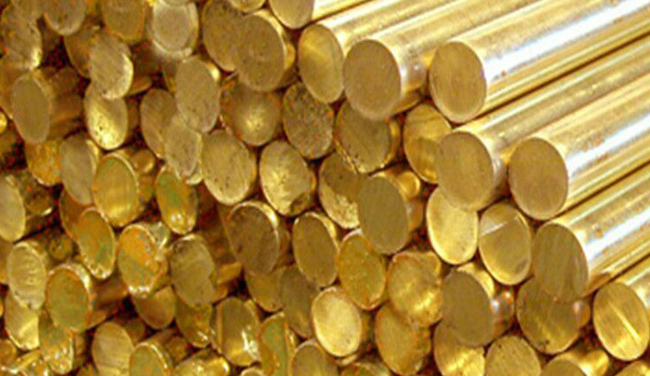
Can Brass CNC Machining Parts be Anodized?
Yes, brass can be subjected to anodization, a process known as "anodizing brass." Anodizing brass involves immersing the brass components in an acidic electrolyte solution, applying an electric current, and forming an oxide layer on the brass surface. This process enhances the appearance and provides corrosion resistance to the brass material, making it suitable for various applications where both aesthetics and durability are important.
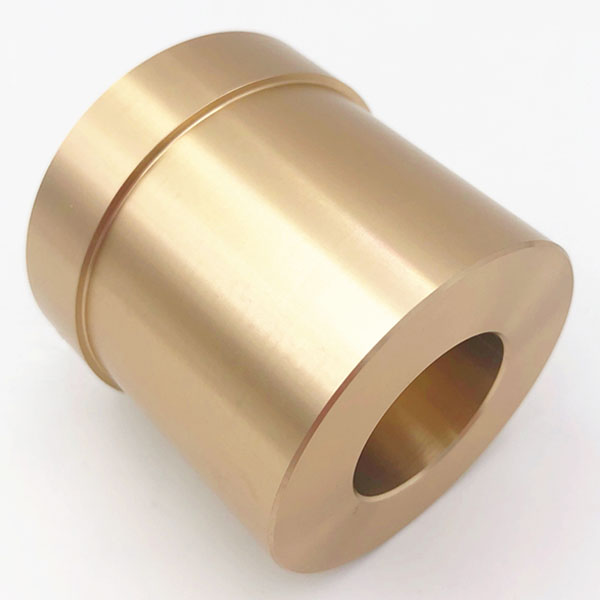
Why Choose Brass Anodizing?
Brass anodizing is chosen for several reasons:
Aesthetics: Anodizing imparts a decorative and attractive finish to brass, enhancing its visual appeal. It can produce a range of colors and finishes, allowing for customization.
Corrosion Resistance: Anodized brass exhibits improved resistance to corrosion, making it suitable for outdoor and marine applications where exposure to moisture and environmental factors is common.
Wear Resistance: Anodizing enhances the hardness and wear resistance of brass surfaces, prolonging their lifespan in demanding environments.
Electrical Insulation: Anodized brass can act as an electrical insulator, which is valuable in applications where electrical conductivity needs to be controlled.
Ease of Maintenance: Anodized surfaces are relatively easy to clean and maintain, contributing to the longevity of the brass components.
Environmental Friendliness: Anodizing is an environmentally friendly process that produces minimal waste and pollution compared to some other surface treatments.
Customization: The anodizing process allows for customization of the brass surface color and finish, catering to specific design and aesthetic requirements.
Can Plastic CNC Machining Parts be Anodized?
No, plastic materials cannot be anodized using the same process as metals like aluminum or brass. Anodizing is a process that relies on the formation of an oxide layer on the surface of a metal through an electrochemical reaction. Plastic materials lack the metal component required for this process.
However, there are similar processes for enhancing plastic surfaces, such as painting, coating, or plating, depending on the desired appearance and functional properties. These processes are specifically designed for plastic materials and offer similar benefits, including aesthetics, protection, and durability.
Which Metals are Suitable for Anodizing Surface Treatment?
Anodizing is primarily used on various metals, with aluminum being the most common material for this surface treatment. However, several metals can undergo anodizing, including:
Aluminum: Aluminum is the most widely anodized metal. The process enhances its corrosion resistance, improves its appearance, and provides electrical insulation.
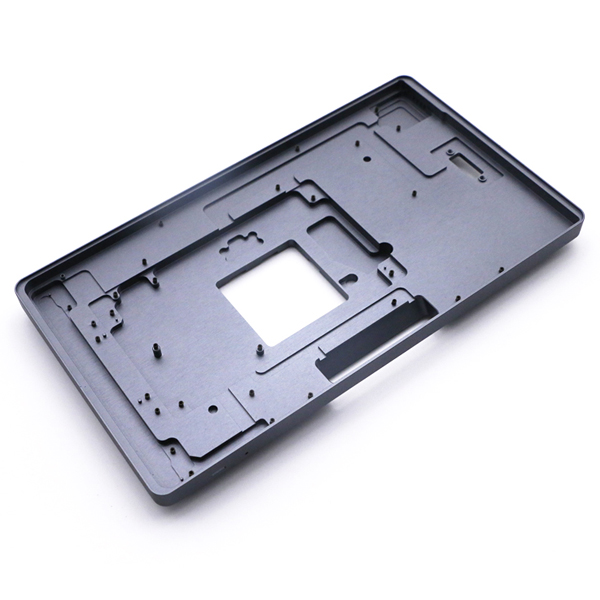
Magnesium: Magnesium can be anodized to improve its corrosion resistance and aesthetics. It is often used in aerospace applications.
Titanium: Anodizing titanium results in improved corrosion resistance, wear resistance, and a range of decorative color options. It's commonly used in the medical and aerospace industries.
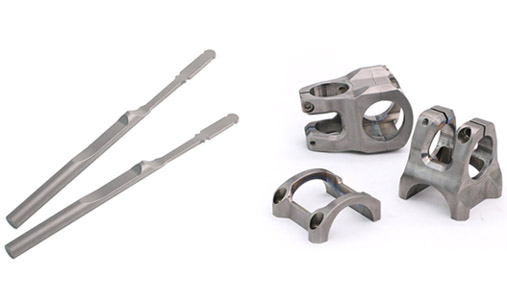
Tantalum: Tantalum anodizing provides a stable oxide layer that enhances corrosion resistance, making it suitable for chemical and medical applications.
Niobium: Niobium can be anodized to produce a variety of colors for jewelry and decorative purposes. It is known for its biocompatibility.
Zirconium: Anodized zirconium surfaces offer improved corrosion resistance and biocompatibility. They are used in medical implants and jewelry.
Hafnium: Anodizing hafnium improves its corrosion resistance and can produce various colors for decorative applications.
Copper and Brass: While not as common as other metals, copper and brass can also undergo anodizing, resulting in enhanced corrosion resistance and decorative finishes.

Other Alloys: Some metal alloys can also be anodized, depending on their composition and properties.
It's essential to note that the specific anodizing process and results can vary depending on the metal used. Each metal may have unique requirements and considerations for anodizing.
The Brass Parts Anodizing Process
The anodizing process for brass parts involves several steps to create a durable and aesthetically pleasing surface finish. Here is an overview of the anodizing process for brass parts:
Surface Preparation: The process begins with thorough cleaning and degreasing of the brass parts. This step is crucial to remove any contaminants, oils, or residues from the surface.
Electrolyte Bath: Brass parts are immersed in an electrolyte bath, typically containing sulfuric acid. This bath acts as the electrolyte for the anodizing process.
Electrolytic Process: Brass parts are connected to the positive terminal (anode) of a power source, while a cathode is also present in the bath. An electric current is passed through the brass parts, initiating the anodization process.
Oxide Layer Formation: During the electrolytic process, the brass parts undergo oxidation, resulting in the formation of an oxide layer on the surface. This oxide layer provides the desired properties, such as corrosion resistance and improved appearance.
Dyeing (Optional): In some cases, brass parts may be dyed to achieve specific colors. Dyeing is an optional step and is often used for decorative purposes.
Sealing: After anodizing and optional dyeing, the brass parts may undergo a sealing process. Sealing helps stabilize the oxide layer and enhances its resistance to wear and corrosion.
Rinsing and Quality Control: The anodized brass parts are thoroughly rinsed to remove any residual chemicals. Quality control measures are taken to ensure that the desired finish and specifications have been achieved.
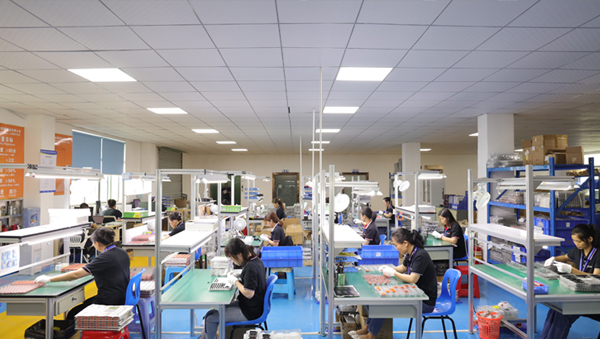
Finishing: Finally, the anodized brass parts may undergo additional finishing processes, such as polishing or buffing, to achieve the desired surface texture and appearance.
The result of this process is an anodized brass surface that exhibits improved corrosion resistance, enhanced aesthetics, and potentially customized colors. Anodized brass is commonly used in decorative applications, architectural elements, and various products where both appearance and durability are essential.
How to Determine the Success of Brass Anodizing?
Determining the success of brass anodizing involves evaluating several key factors to ensure the desired finish and performance have been achieved. Here's how to assess the outcome:
Visual Inspection: Conduct a thorough visual inspection of the anodized brass parts. Check for uniformity in color and appearance. The anodized layer should have a consistent and even finish across the entire surface.
Color Matching: Compare the final color with your specified requirements. The color should closely match your expectations, although minor variations may occur due to factors like alloy composition and processing conditions.
Coating Thickness: Measure the thickness of the anodized layer. This can be done using specialized instruments. Ensure that the thickness meets the specified requirements, as it directly affects the durability and corrosion resistance of the finish.
Adhesion Testing: Perform adhesion tests to check how well the anodized layer adheres to the brass substrate. Adhesion should be strong, and there should be no signs of peeling or flaking when subjected to standard adhesion testing methods.
Corrosion Resistance: Test the anodized brass parts for corrosion resistance. Expose them to harsh environmental conditions or corrosive substances relevant to your application and observe for signs of corrosion or degradation.
Abrasion Resistance: Assess the resistance of the anodized layer to abrasion. Abrade a small, inconspicuous area and check for any damage to the finish. Anodized brass should exhibit reasonable resistance to everyday wear and tear.
Electrical Conductivity: If electrical conductivity is critical, test the anodized parts for their electrical properties. Ensure that the insulating properties of the anodized layer do not interfere with the intended functionality of the components.
Quality Control Records: Review the records and documentation provided by the anodizing service provider. This should include information about processing parameters, quality control tests, and compliance with specifications.
Client Feedback: Seek feedback from end-users or clients who will use the anodized brass parts in their applications. Their input can provide valuable insights into the success of the anodizing process in meeting their specific needs.
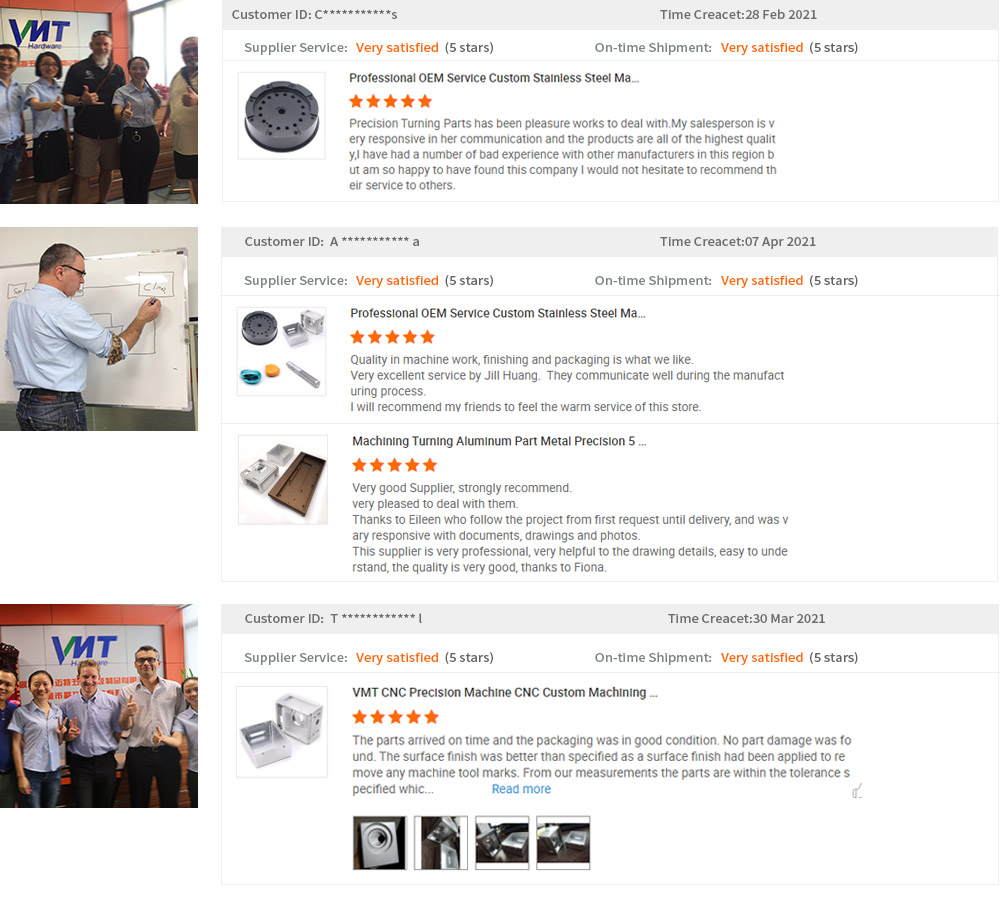
Consultation with Experts: When in doubt or if facing challenges in assessing the success of brass anodizing, consult with experts in the field. Anodizing professionals can provide guidance and solutions to address any issues.
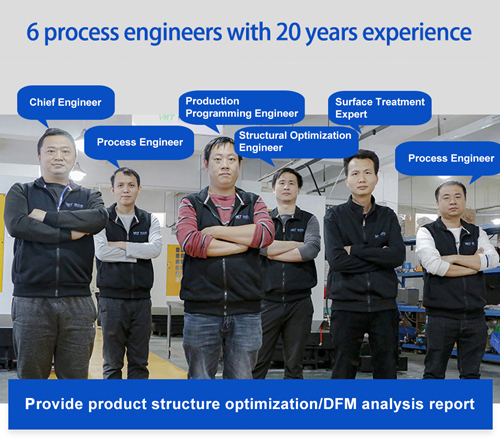
By carefully evaluating these factors, you can determine whether the brass anodizing process has been successful and whether the finished parts meet the required standards and expectations.
What Colors Can be Produced by Anodizing Brass Parts?
The color options achievable by anodizing brass parts can vary depending on the specific anodizing process and any dyeing or coloring steps involved. Here are some common colors that can be produced by anodizing brass parts:
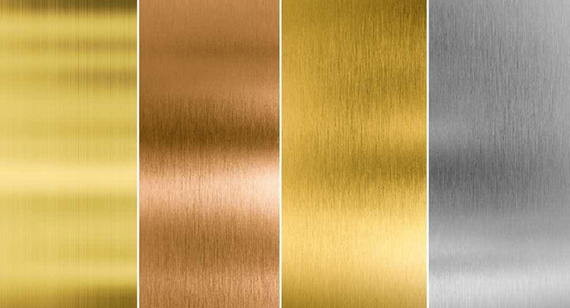
Gold/Yellow: Anodized brass can have a gold or yellow appearance. This color is often associated with the natural hue of brass and does not require additional dyeing.
Red: Red anodized brass parts can be achieved by using specific dyes in the anodizing process. The shade of red can vary, from bright red to deeper maroon tones.
Blue: Blue anodized brass is created by using blue dyes during the anodizing process. The resulting shades of blue can range from light to dark blue.
Green: Green anodized brass parts can be achieved through the use of green dyes. The color may vary from a subtle greenish tint to a more vibrant green.
Black: Black anodized brass is typically achieved by using a combination of dyes and sealing processes. It results in a deep black color.
Purple: Purple anodized brass parts can be created by using purple dyes in the anodizing process. The shade of purple can vary.
Orange: Orange anodized brass parts can be produced using orange dyes. The resulting color may range from bright orange to a deeper hue.
Brown: Brown anodized brass can be achieved by using brown dyes. It provides a warm and earthy appearance.
Custom Colors: Depending on the dyeing process and the availability of specific dyes, custom colors can also be created to meet specific design or aesthetic requirements.
It's important to note that achieving consistent and precise colors in anodized brass parts may require careful control of the anodizing process, including factors such as voltage, current density, and dye concentration. Additionally, the choice of dye or coloring agents can influence the final color result.
When selecting colors for anodized brass parts, it's advisable to work with experienced professionals or anodizing specialists who can provide guidance on achieving the desired color outcomes.
What Effect Does Anodizing Have On Brass Parts?
Anodizing brass parts can have several effects, both positive and potential challenges, on the components, including impacts on size, precision, and other properties. Here's an overview of the effects of anodizing on brass parts:
1. Thickness Increase: Anodizing results in the formation of an oxide layer on the surface of brass parts. This layer is typically thin, but it can lead to a slight increase in the overall dimensions of the part. Engineers and manufacturers must account for this thickness increase in design and tolerances.
2. Improved Corrosion Resistance: Anodizing provides an enhanced level of corrosion resistance to brass parts. This protective oxide layer acts as a barrier against environmental factors, reducing the likelihood of corrosion and degradation over time.
3. Enhanced Aesthetics: Anodized brass parts can exhibit a wide range of colors, improving their visual appeal and making them suitable for decorative and architectural applications.
4. Increased Durability: The protective oxide layer improves the overall durability of brass parts, making them more resistant to wear and environmental stressors.
5. Electrical Insulation: Anodizing can insulate brass parts electrically, making them suitable for applications where electrical conductivity needs to be minimized.
6. Potential Size Variations: The anodizing process, especially if not controlled carefully, can introduce slight variations in size. Manufacturers must consider these variations when producing precision components.
7. Impact on Threads and Tolerances: Threads and tight tolerances may be affected by the thickness of the anodized layer. Special attention is required to maintain the desired fit and function.
8. Material Properties: Anodizing generally does not significantly alter the mechanical properties of brass, such as its strength or hardness. However, it can affect the coefficient of friction and other surface characteristics.
9. Precision Machining: If precision machining is required after anodizing, additional care must be taken to ensure that the oxide layer is not compromised during the machining process.
10. Material Compatibility: Brass parts that will undergo anodizing should be composed of brass alloys that are suitable for the process. Different brass alloys may react differently to the anodizing chemicals.
In summary, anodizing brass parts can provide benefits such as improved corrosion resistance, enhanced aesthetics, and increased durability. However, it's essential to carefully consider the potential size variations, impacts on tolerances, and any post-anodizing machining requirements when using anodized brass components in precision applications. Proper design, material selection, and process control are key to achieving the desired results with anodized brass parts.
Advantages and Disadvantages of Brass Anodizing
Anodizing brass, also known as brass anodizing, offers several advantages and has some drawbacks. Here's a summary of the advantages and disadvantages of brass anodizing:
Advantages of Brass Anodizing:
Enhanced Corrosion Resistance: Anodizing creates a protective oxide layer on the brass surface, significantly improving its resistance to corrosion and environmental damage.
Aesthetic Variety: Brass parts can be anodized to achieve a wide range of colors, providing aesthetic versatility for decorative and architectural applications.
Increased Durability: The anodized layer enhances the overall durability of brass parts, making them more resistant to wear, abrasion, and scratches.
Electrical Insulation: Anodized brass can offer electrical insulation properties, making it suitable for applications where electrical conductivity needs to be minimized.
Customization: Anodizing allows for the customization of brass parts' appearance, making them ideal for products that require specific visual effects.
Disadvantages of Brass Anodizing:
Size Variations: Anodizing can lead to a slight increase in the overall dimensions of brass parts, which must be considered in design and tolerances.
Impact on Threads and Tolerances: Threads and tight tolerances may be affected by the thickness of the anodized layer, requiring careful consideration in precision applications.
Potential Size Variations: The anodizing process, if not controlled meticulously, can introduce slight variations in size that may affect fit and function.
Complex Process: Anodizing is a multi-step process that requires specialized equipment and expertise, making it more complex and potentially costly compared to other surface treatments.
Post-Anodizing Machining: If precision machining is required after anodizing, additional care is needed to avoid compromising the oxide layer during machining.
Material Compatibility: Different brass alloys may react differently to the anodizing chemicals, and not all brass compositions are suitable for the process.
In conclusion, brass anodizing offers notable advantages such as improved corrosion resistance, aesthetic customization, and enhanced durability. However, it also presents challenges related to size variations, tolerances, and the need for precision in post-anodizing processes. Proper material selection, design considerations, and process control are essential to maximize the benefits of brass anodizing while mitigating its potential drawbacks.
Brass Anodizing and Other Surface Treatments: Differences, Finishes and Cost Comparison
Differences Between Brass Anodizing and Other Surface Treatments:
Anodizing vs. Plating: Unlike plating processes, where a metal layer is deposited onto the surface, anodizing forms an oxide layer on the brass substrate. Anodizing is more of a surface conversion process rather than a coating.
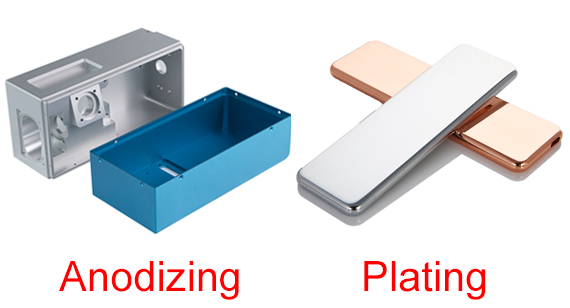
Appearance: Anodizing offers a broader spectrum of color options, making it suitable for decorative applications. In contrast, plating typically provides a metallic finish but with limited color choices.
Corrosion Resistance: Both anodizing and plating improve corrosion resistance, but anodizing is known for its exceptional resistance to corrosion and environmental damage, making it ideal for outdoor and marine applications.
Material Removal: Anodizing does not involve material removal, preserving the part's original dimensions, while plating can add thickness, potentially altering the component's size.
Electrical Insulation: Anodized brass can offer electrical insulation properties, which is not a common feature in most plating processes.
Cost: Anodizing is generally more cost-effective than some high-end plating processes, especially when considering the range of colors achievable without additional coatings.
Surface Effects and Cost Comparison:
Brass Anodizing: Provides a range of vibrant colors, improved corrosion resistance, and electrical insulation properties. The cost is relatively lower compared to certain plating methods.
Brass Plating: Offers a metallic finish, enhancing appearance and corrosion resistance. Depending on the type of plating (e.g., nickel or chrome plating), the cost can be higher than anodizing, especially for decorative finishes.
Powder Coating: Creates a durable, decorative finish with color customization options but is more commonly used on steel or aluminum. The cost varies depending on the material and complexity of the part.

Painting: Provides versatility in color and texture but may not offer the same level of durability or corrosion resistance as anodizing or plating. Costs can be moderate.
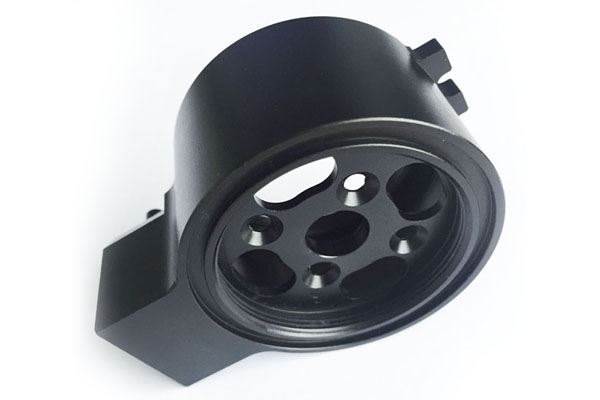
Chemical Treatments: Processes like passivation can improve corrosion resistance and appearance, but color options are limited, and electrical insulation properties are typically absent. Costs are generally lower.
In summary, brass anodizing distinguishes itself with a wide range of colors, exceptional corrosion resistance, and electrical insulation. It compares favorably in cost to certain plating methods. The choice between anodizing and other treatments depends on specific requirements, aesthetics, and budget considerations for a particular application.
Anodized Brass Parts Applications
Architectural Elements: Brass anodized components find extensive use in architectural applications, including handrails, decorative panels, and façade elements, where their corrosion resistance and aesthetic appeal enhance building designs.
Decorative Fixtures: The vibrant color options make anodized brass ideal for creating decorative fixtures, such as lighting fixtures, chandeliers, and ornamental hardware, adding a touch of elegance to interior and exterior spaces.
Consumer Electronics: Anodized brass is often employed in consumer electronics, including smartphones, tablets, and laptops, for decorative accents, speaker grilles, and buttons due to its pleasing appearance and durability.
Marine Equipment: Brass anodized parts are well-suited for marine applications, such as boat fittings, portholes, and railing systems, as they withstand the corrosive effects of saltwater and maintain their appearance over time.
Automotive Accessories: Anodized brass is used in automotive trim components, interior accents, and grille details to enhance the vehicle's aesthetics and resist environmental wear.
Jewelry: Designers use anodized brass in crafting unique jewelry pieces, capitalizing on the color variety and corrosion resistance for artistic expression.
Furniture: Anodized brass is employed in furniture design for handles, knobs, and decorative features, providing a durable and visually appealing finish.
Aerospace Components: Brass anodizing is used in aerospace applications for parts that require both aesthetic appeal and corrosion resistance, contributing to aircraft interiors and instrumentation.
Medical Devices: Some medical devices incorporate anodized brass components, particularly for items requiring a corrosion-resistant finish, such as surgical instruments and diagnostic equipment.
Art Installations: Artists and sculptors appreciate the color options and durability of anodized brass in creating captivating art installations.
Electrical Components: Anodized brass can serve in electrical components and connectors, benefiting from its electrical insulation properties and resistance to environmental factors.
Outdoor Furniture: Brass anodizing enhances the longevity and visual appeal of outdoor furniture, ensuring that it can withstand exposure to the elements.
In essence, brass anodized parts find application in a wide range of industries, offering a combination of aesthetics and corrosion resistance that makes them valuable in various functional and decorative contexts.
Problems and Precautions for Anodized Brass Parts
Issues and Considerations for Brass Anodized Parts:
Surface Preparation: Proper surface preparation is critical. Ensure that the brass substrate is thoroughly cleaned and free from contaminants, as any impurities can affect the quality of the anodized finish.
Alloy Compatibility: Be mindful of the brass alloy used. Some alloys may anodize more effectively than others, so consult with experts or perform tests to determine compatibility.
Color Consistency: Achieving consistent colors in brass anodizing can be challenging due to variations in alloy composition and processing conditions. It's essential to communicate color expectations with your anodizing service provider.
Quality Control: Implement stringent quality control measures to monitor the anodizing process, including coating thickness, color, and adhesion, to ensure the desired finish is achieved.
Masking and Sealing: Consider which areas need masking to prevent anodizing, as well as which parts require sealing to maintain the finish's integrity and corrosion resistance.
Electrical Contact: Be cautious about electrical contact points on anodized brass parts, as the insulating properties of the anodized layer can affect electrical conductivity. Mask or plan for electrical contact points accordingly.
Environmental Conditions: Brass anodized parts may react differently to various environmental conditions. Assess whether the parts will be exposed to extreme temperatures, UV radiation, or corrosive substances and choose an appropriate anodizing process.
Abrasion Resistance: While anodized brass offers good corrosion resistance, it may have limited abrasion resistance. Evaluate whether the parts will be subjected to abrasive conditions and consider post-treatments or coatings if necessary.
Maintenance: Educate end-users about the proper maintenance of anodized brass parts to prolong their appearance and functionality. Regular cleaning and care can help preserve the finish.
Cost Considerations: Brass anodizing can add to the overall cost of parts. Balance the benefits of the finish against the budget constraints of your project.
Regulatory Compliance: Ensure that the anodizing process and any associated treatments comply with relevant environmental and safety regulations.
Consultation: When in doubt, consult with experienced anodizing professionals or engineers who can provide guidance on the specific requirements of your brass parts and assist in achieving the desired finish.
Brass anodizing is a versatile surface treatment with numerous benefits, but addressing these issues and considerations will help ensure the successful application of this process to your brass components.
Conclusion
Do you know how to choose the right finish for your project? VMT’s surface treatment experts with 15 years of experience help you select the right surface treatment to improve the surface texture and performance of your anodized brass CNC machined parts.
Learn about the anodizing surface treatment process, benefits and applications in this article. If you would like to learn more about anodized surface treatments, please contact us today. VMT can provide a wide range of CNC machining manufacturing capabilities and surface treatment services for stainless steel, aluminum, titanium, brass and other materials. Our team of expert engineers can help you select the right surface treatment to meet your production needs for all your anodized brass CNC machined parts. , get the best and competitive price. Why not give VMT CNC machining factory a try and contact us today for a quote.
Anodized Brass Parts FAQs
Frequently Asked Questions (FAQs) about Anodized Brass Parts:
What is brass anodizing?
Brass anodizing is an electrochemical process that forms a protective oxide layer on the surface of brass components. This layer enhances corrosion resistance, provides color options, and improves the appearance of brass parts.
Can all brass alloys be anodized?
Not all brass alloys can be effectively anodized. Some alloys may not produce the desired color or finish. Consult with an anodizing expert to determine the compatibility of your specific alloy.
What colors can be achieved with brass anodizing?
Brass anodizing offers a range of colors, including gold, bronze, and black. The specific color achieved can vary based on the alloy, anodizing process, and desired outcome.
How is brass anodizing different from aluminum anodizing?
While the process is similar, brass anodizing may require different chemicals and processing conditions due to the unique properties of brass. Aluminum anodizing forms a layer of aluminum oxide, while brass anodizing creates a layer of mixed brass and aluminum oxides.
Is anodized brass durable?
Yes, anodized brass is known for its durability. The anodized layer provides corrosion resistance and can withstand normal wear and tear. However, it may show signs of wear in high-abrasion environments.
Can anodized brass parts be re-anodized?
Re-anodizing brass parts is possible but can be challenging due to the need to remove the existing anodized layer. It's best to consult with an anodizing professional for guidance.
How should I clean and maintain anodized brass parts?
To maintain the finish, clean anodized brass parts with a mild, non-abrasive detergent and a soft cloth. Avoid abrasive cleaners or scouring pads that can damage the anodized layer.
Are anodized brass parts suitable for outdoor use?
Yes, anodized brass parts are suitable for outdoor applications. The anodized layer provides protection against corrosion and UV radiation. However, periodic maintenance may be required to preserve the finish.
Can anodized brass parts conduct electricity?
Anodized brass has insulating properties, which means it may inhibit electrical conductivity. If electrical contact is essential, consider masking or providing designated contact points.
What industries commonly use anodized brass parts?
Anodized brass finds application in various industries, including architecture, automotive, electronics, marine, jewelry, and decorative fixtures, where both aesthetics and corrosion resistance are essential.
Is anodizing environmentally friendly?
Anodizing is generally considered environmentally friendly as it doesn't involve hazardous materials or produce harmful byproducts. However, proper waste disposal and compliance with environmental regulations are essential.
Can I achieve a specific color with brass anodizing?
Achieving a precise color can be challenging due to variations in brass alloys and processing conditions. Discuss your color requirements with an experienced anodizing service provider for the best results.
These FAQs provide insights into the process, benefits, and considerations surrounding the anodizing of brass parts, helping you make informed decisions for your specific applications.
